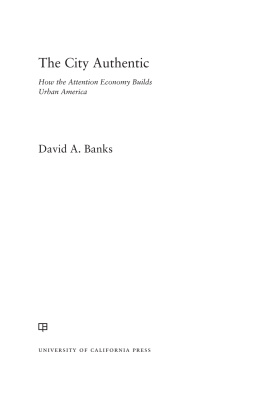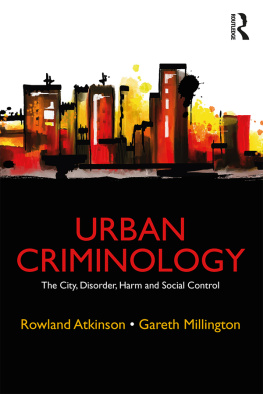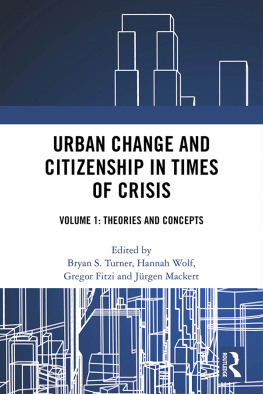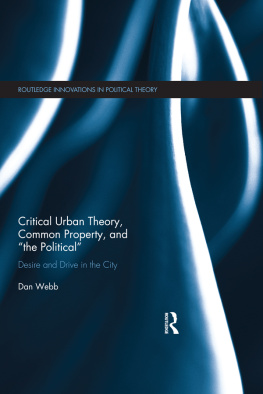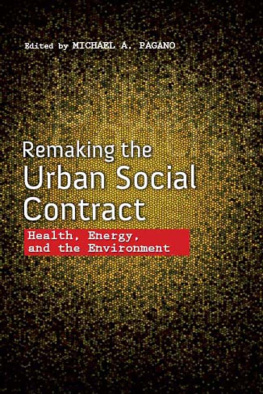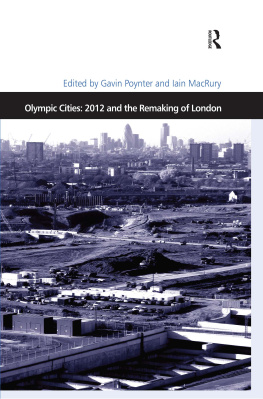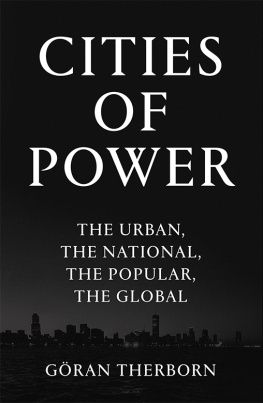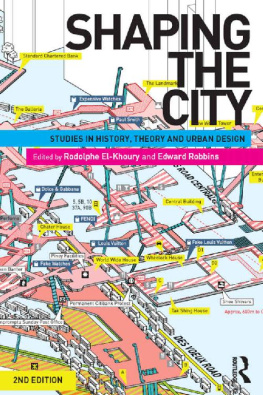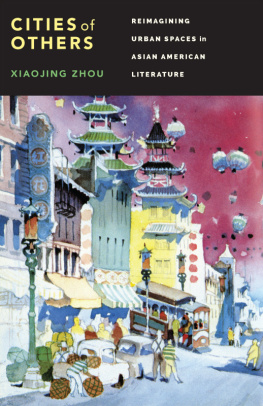TOWARDS SAFE CITY CENTRES?
Re-materialising Cultural Geography
Dr Mark Boyle, Department of Geography, University of Strathclyde, UK and Professor Donald Mitchell, Maxwell School, Syracuse University, USA
Nearly 25 years have elapsed since Peter Jacksons seminal call to integrate cultural geography back into the heart of social geography. During this time, a wealth of research has been published which has improved our understanding of how culture both plays a part in, and in turn, is shaped by social relations based on class, gender, race, ethnicity, nationality, disability, age, sexuality and so on. In spite of the achievements of this mountain of scholarship, the task of grounding culture in its proper social contexts remains in its infancy. This series therefore seeks to promote the continued significance of exploring the dialectical relations which exist between culture, social relations and space and place. Its overall aim is to make a contribution to the consolidation, development and promotion of the ongoing project of re-materialising cultural geography.
Other titles in the series
Fear: Critical Geopolitics and Everyday Life
Rachel Pain and Susan J. Smith
ISBN 978 0 7546 4966 3
In the Shadows of the Tropics
Climate, Race and Biopower in Nineteenth Century Ceylon
James S. Duncan
ISBN 978 0 7546 7226 5
Geographies of Muslim Identities
Diaspora, Gender and Belonging
Edited by Cara Aitchison, Peter Hopkins and Mei-Po Kwan
ISBN 978 0 7546 4888 8
Presenting Americas World
Strategies of Innocence in National Geographic Magazine, 18881945
Tamar Y. Rothenberg
ISBN 978 0 7546 4510 8
Mixed Towns, Trapped Communities
Historical Narratives, Spatial Dynamics, Gender Relations
and Cultural Encounters in Palestinian-Israeli Towns
Edited by Daniel Monterescu and Dan Rabinowitz
ISBN 978 0 7546 4732 4
Towards Safe City Centres?
Remaking the Spaces of an Old-Industrial City
GESA HELMS
University of Glasgow, UK
First published by 2008 Ashgate Publishing
Published 2016 by Routledge
2 Park Square, Milton Park, Abingdon, Oxon OX14 4RN
711 Third Avenue, New York, NY 10017, USA
Routledge is an imprint of the Taylor & Francis Group, an informa business
Copyright Gesa Helms 2008
Gesa Helms has asserted her moral right under the Copyright, Designs and Patents Act, 1988, to be identified as the author of this work.
All rights reserved. No part of this book may be reprinted or reproduced or utilised in any form or by any electronic, mechanical, or other means, now known or hereafter invented, including photocopying and recording, or in any information storage or retrieval system, without permission in writing from the publishers.
Notice:
Product or corporate names may be trademarks or registered trademarks, and are used only for identification and explanation without intent to infringe.
British Library Cataloguing in Publication Data
Helms, Gesa
Towards safe city centres? : remaking the spaces of an
old-industrial city. - (Re-materialising cultural
geography)
1. Sociology, Urban - Scotland - Glasgow 2. Crime
prevention - Scotland - Glasgow 3. Urban renewal - Scotland
- Glasgow 4. City planning - Scotland - Glasgow
I. Title
307.764094144
Library of Congress Cataloging-in-Publication Data
Helms, Gesa.
Towards safe city centres? : remaking the spaces of an old-industrial city / by Gesa Helms.
p. cm. -- (Re-materialising cultural geography)
Includes index.
1. Urban renewal--Scotland--Glasgow. 2. Crime prevention--Scotland--Glasgow. 3. Economic development--Scotland--Glasgow. 4. Glasgow (Scotland)--Economic policy. I. Title.
HT178.G532H45 2007
307.3416094144--dc22
2007017567
ISBN 978 0 7546 4804 8
Contents
List of Figures and Photos
List of Tables
List of Boxes
Preface
The origins of this book lie in my doctoral thesis in Human Geography. The research for this project was undertaken between 2000 and 2003 and, as such, it is bound to a particular time and place. British policy in general, but in particular in the fields of criminal justice and urban matters, has over the past fifteen years witnessed a staggering range of new initiatives, projects and agendas: to name but a few, we saw the arrival of the Social Exclusion Unit, the New Deal for Communities, an Urban Renaissance and Sustainable Communities. For criminal justice, one of the most far-reaching changes has been of course the Anti-Social Behaviour Act and its various amendments. While it took a while to be taken up by practitioners, Anti-Social Behaviour and other related orders have firmly become part of public policy and in many ways are already replacing Community Safety as a policy field. On the organisational level, we find institutions being wound down while new ones are emerging. Here, some of the key organisations in this study do not exist any longer in the form discussed: namely the City Centre Partnership was abolished at the end of its initial funding in 2003 with functions (and most staff) being taken back into the local authority; similarly, Social Inclusion Partnerships became reorganised into the Scottish Community Planning Framework on the basis of the Local Government in Scotland Act (2003).
Yet, as will become obvious early on in this book, the research project was less concerned with the evaluation of particular policies and initiatives but instead attempted to develop a set of substantive arguments to do with social praxis and political economy. Trying to make sense of the working practices within policing and regeneration, the project thus focused in on the ways of doing safety and regeneration relating back to particular organisational arrangements and the demands of these. While some of the specificities of policy formulations, action plans or particular institutional responsibilities are therefore to be read historically, the main arguments developed throughout this book go beyond a particular policy measure, and are if valid and valuable remaining in place and time for somewhat longer than many of the, often very short-lived, policy initiatives.
It is a good thing that any research project never develops within a social vacuum. For this one this means that both the original research as well as the rewriting of the manuscript would not have been possible without a number of people, organisations and arrangements.
Throughout the empirical study, I have benefited from the time and generosity of many practitioners in the field. In particular, the project is indebted to the City Centre Representatives project, where staff and trainees alike took time to talk to me about their work, take me along on their work tours and provided valuable material. Also, staff at the City Centre Partnership were more than helpful in explaining the work practices and strategies of city centre upgrading and safety. Furthermore, the Community Safety Initiative; the Strathclyde Police, A Division, Community Safety Department; its Street Liaison Team; outreach and support workers at the Big Issue, Base 75 and Barnardos and many more individuals and organisations deserve a big thank you.
For the publication of this book, Don Mitchell and Mark Boyle as editors of the Rematerialising Cultural Geographies book series have been very supportive. Also, I would like to thank the team at Ashgate, in particular Val Rose and Aime Feenan for their part in seeing this publication come to fruition. presents a revised and expanded engagement with debates also published earlier in the journal of


